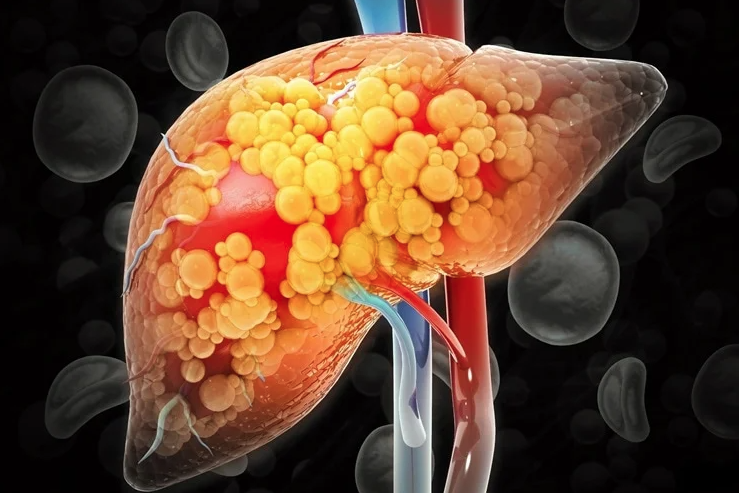A New Hope for Liver Disease Patients
Non-alcoholic fatty liver disease (NAFLD) and its more severe form, non-alcoholic steatohepatitis (NASH), affect millions worldwide and have long been without effective pharmaceutical treatments. But a new breakthrough is making headlines: Semaglutide Shows, a glucagon-like peptide-1 (GLP-1) receptor agonist, initially developed for type 2 diabetes and obesity, is now showing strong potential in treating serious liver disease.
Recent clinical trials and studies suggest that semaglutide not only helps in weight reduction and blood sugar control, but also plays a pivotal role in reducing liver fat, inflammation, and fibrosis—key factors in liver disease progression.
What is Semaglutide & Semaglutide shows?
Semaglutide is an analog of the human hormone GLP-1, which regulates insulin secretion and appetite. It is marketed under brand names like Ozempic, Wegovy, and Rybelsus. Initially approved by the FDA to treat type 2 diabetes, its efficacy in promoting weight loss led to its expanded use in obesity treatment.
In clinical trials, semaglutide has helped patients lose an average of 10–15% of their body weight. This is significant because obesity and insulin resistance are major drivers of liver disease progression.

The Link Between Obesity and Liver Disease
Liver disease, especially NAFLD and NASH, is strongly linked to metabolic disorders like obesity, type 2 diabetes, and insulin resistance. Excess fat accumulation in the liver triggers inflammation, oxidative stress, and fibrosis, leading to complications such as cirrhosis and liver cancer.
As obesity rates continue to rise globally, liver diseases associated with metabolic dysfunction are also becoming more common. Traditional treatment approaches, like lifestyle changes, have limited success, emphasizing the need for effective pharmacologic therapies.
Semaglutide in Clinical Trials for Liver Disease
Several high-profile clinical trials have evaluated the efficacy of semaglutide in patients with NAFLD and NASH. One landmark trial, published in The New England Journal of Medicine, studied over 300 patients with biopsy-confirmed NASH Semaglutide Shows. Participants were randomized to receive either a placebo or daily semaglutide injections.
Key findings from the trial:
- Over 60% of patients on semaglutide showed resolution of NASH without worsening fibrosis.
- Semaglutide significantly reduced liver fat content (as measured by MRI-PDFF).
- It improved metabolic markers like fasting glucose, HbA1c, and lipid levels.
- Patients experienced weight reductions of up to 15%.
These findings suggest that semaglutide does more than treat metabolic dysfunction; it directly influences liver health.
How Semaglutide Works in Liver Disease
Semaglutide appears to combat liver disease through multiple mechanisms:
- Weight Reduction: Reduced adiposity lowers fat accumulation in the liver.
- Improved Insulin Sensitivity: Lower insulin resistance helps regulate hepatic fat metabolism.
- Anti-Inflammatory Effects: GLP-1 receptor activation reduces inflammatory markers.
- Anti-Fibrotic Action: Semaglutide may reduce liver scarring (fibrosis) over time.
These synergistic effects make it a uniquely powerful candidate for treating both the metabolic and inflammatory components of liver disease.
A Look at the Numbers: Liver Disease in the U.S.
Liver disease is a growing concern in the United States:
- Over 30% of adults are estimated to have NAFLD.
- About 1 in 20 develop NASH.
- Liver disease is among the leading causes of death in people aged 45–64.
Given these numbers, even a modestly effective treatment could have a profound public health impact.
Comparing Semaglutide to Other Treatments
To date, there are no FDA-approved medications specifically for NASH. Other drugs under investigation include:
- Obeticholic acid
- Lanifibranor
- Aramchol
While these agents show some promise, semaglutide’s superior performance in weight loss and glycemic control gives it a clear advantage. Unlike other drugs that target a single pathway, semaglutide offers comprehensive benefits across multiple systems.
Like any medication, semaglutide is not without risks. Common side effects include:
Semaglutide show Side Effects and Considerations
- Nausea
- Vomiting
- Diarrhea
- Constipation
These symptoms are generally mild and decrease over time. There are also concerns about potential pancreatitis and thyroid tumors, although these risks are still being evaluated.
Semaglutide is administered via subcutaneous injection, typically once a week, which may affect patient adherence. Oral formulations (like Rybelsus) offer alternative options.
Real-World Impact and Patient Outcomes
Patient stories are beginning to emerge that underscore semaglutide’s transformative potential. One patient, a 52-year-old with poorly controlled type 2 diabetes and early-stage NASH, lost 40 pounds over 8 months on semaglutide. Liver enzyme levels normalized, and imaging studies showed significant fat reduction.
These anecdotal successes reflect the broader clinical trend of semaglutide improving both quality of life and long-term outcomes.
Future Directions and Ongoing Research about Semaglutide Show
Researchers are currently exploring combination therapies involving semaglutide and other agents, such as:
- Fibroblast growth factor analogs (FGF21)
- Thyroid hormone receptor-beta agonists
These combinations could further improve fibrosis reversal and inflammation reduction.
Additionally, trials are investigating the use of semaglutide in earlier stages of liver disease, as well as in pediatric populations, to prevent disease progression from the outset.
Policy Implications and Access
As semaglutide becomes more prominent in liver disease treatment, issues around cost and access must be addressed. Wegovy, one of the most commonly prescribed semaglutide formulations, can cost over $1,300 per month without insurance.
Policy makers, insurers, and healthcare systems must consider:
- Reimbursement models for long-term chronic care
- Inclusion in treatment guidelines
- Availability for underserved populations
Expert Opinions
Dr. Rohit Loomba, a hepatologist at the University of California San Diego, notes:
“We’re entering a new era of liver disease treatment. Semaglutide is not just a metabolic drug—it’s a liver drug, and it could change the way we treat NASH forever.”
Dr. Arun Sanyal, another leading expert, adds:
“We’ve waited decades for a drug with this kind of efficacy and safety profile. It’s a game-changer.”
A Breakthrough Worth Watching
With increasing evidence from clinical trials, patient experiences, and expert endorsements, semaglutide is rapidly emerging as one of the most promising treatments for serious liver disease. Its dual ability to manage metabolic dysfunction and directly improve liver health makes it uniquely suited for tackling the growing burden of NAFLD and NASH.
As more research emerges and regulatory approvals evolve, semaglutide may soon become the standard of care for millions suffering from liver disease. Until then, healthcare professionals and patients alike should keep a close watch on this groundbreaking development.


